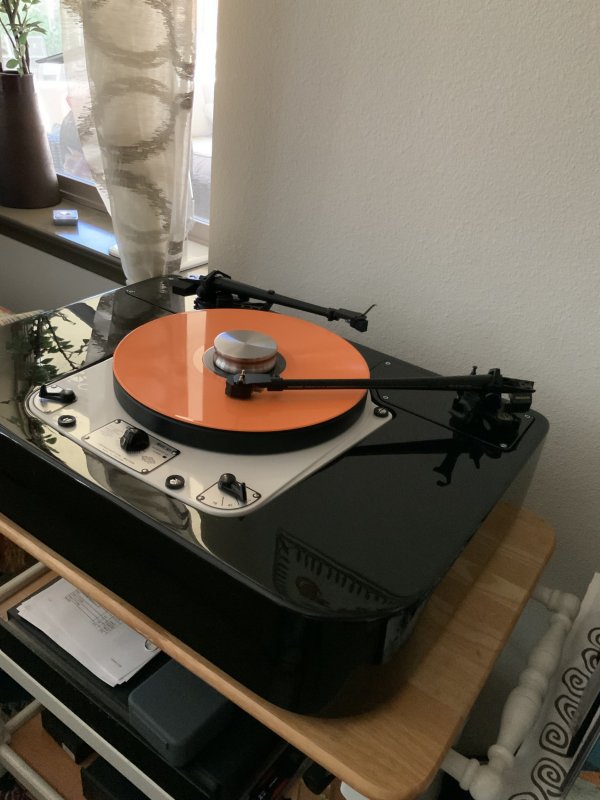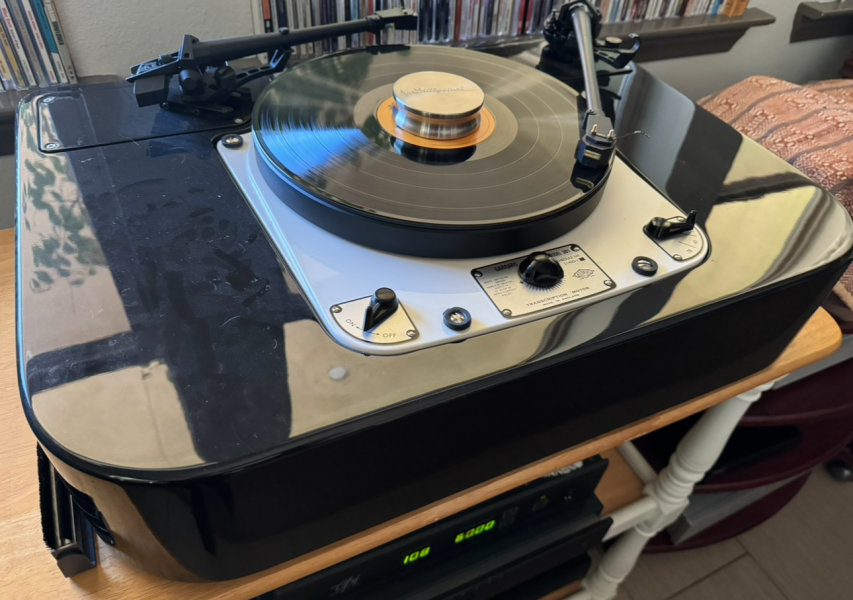I believe the Schick headshells are also available in wood and some sort of metal impregnated phenolic as well. ( at least Schick made them all in the past...)
Phenolic appeals. I have had great results with my permali-cored plinth and armboards.
I believe the Schick headshells are also available in wood and some sort of metal impregnated phenolic as well. ( at least Schick made them all in the past...)
@Mike Lavigne have you tried mounting the Infinity on the CS Port linear arm?
Interesting to know how’s the synergy.
great description!I just installed the Miyajima Infinity 0.7 with Ikeda 407 arm on Garrard 301. Listening to my dad's old monos, some I have bought over time and reissues. Preliminary feeling after a few hours -- either old monos were really dynamic or the cartridge is just adding some kind of amazing electricity. The sound is amazing and lifelike. Reverb and hall echo add a lot of space and the sound is really natural. I love it and will seek out more mono pressings for sure.
Thanks for your kind words and your initial reports that inspired me to get the cartridge.great description!
that extra level of life and dynamics from the Infinity does get your attention. the Garrard 301/Ikeda combo perfectly complimentary.
enjoy and congrats!
I have the Zero Infinity 0.7 mounted also on a restored Garrard 301 with an SME 312S 12” arm. It sound magical on mono jazz albums, as well as mono popular albums. I recently bought a stash of 30+ Time Life Jazz Box sets, many recorded in the 1930s-1940s. Some sound amazing given their vintage. The Infinity is a large cartridge so mounting it is a bit tricky, especially on an SME head shell.I just installed the Miyajima Infinity 0.7 with Ikeda 407 arm on Garrard 301. Listening to my dad's old monos, some I have bought over time and reissues. Preliminary feeling after a few hours -- either old monos were really dynamic or the cartridge is just adding some kind of amazing electricity. The sound is amazing and lifelike. Reverb and hall echo add a lot of space and the sound is really natural. I love it and will seek out more mono pressings for sure.

hi Marc,Hello y'all, long time lurker but first time poster here. Allow me to dig out this thread.
I've been listenig to my mono records with a Hana SL Mono over the past few months and am liking it, but I feel that I can "do better". Also, new, stereo-cut mono reissues sound better with my Hana Umami Red than with the mono cart and I want to change that aswell. I can't do two mono carts (one 1mil and one .7mil), so I need to settle for one of the two. And I really like the idea of the Miyajimas being "true mono" cartridges, with no vertical compliance and only one coil, compared to almost all other modern mono cartridges which are just internally bridged and have the coils rotated.
So, my first question is: Would a .7mil be the better allrounder? My Mono LPs are quite evenly distributed between late50s/early 60s and modern reissues (Speakers Corner, Analogue Productions, Blue Note Classics & Tone Poets, etc.).
The second question, which has been giving me quite a headache over the last few weeks, if not months, is: Is it "safe" to play these stereo-cut monos with the Miyajima cartridges? Since they have no vertical compliance, I've read statements from multiple people in various forums online that these reissues might get damaged with a cart like this. Because - and that's what I don't quite understand - allegedly, on a stereo-cut mono record, the groove - even though there should only be horizonal modulations - might not be of the exact same depth everywhere, thus risking groove damage from the non-compliant mono stylus.
The argument that people make is, that this might happen due to external influences like vibrations or whatever while cutting the record. But I doubt that something like this really occurs in such a controlled environment as a mastering studio. Also, even if this would happen with stereo-cut monos, it should also happen with stereo records, right?. And in that case, you would clearly hear such vertical modulations because, well, a stereo cart generates a current from vertical movement. Right? Unless those supposed vertical modulations would be so small in amplitude, that you couldn't hear them anyways. Like slightly warped records. RIGHT? But then again, wouldn't such slight modulations be easily "nullified" by the vertical movement of the tonearm?
I also couldn't find any reports from people actually damaging their records with these cartridges. Just people warning others to be cautious not to do it. In real life aswell as online. Oh man, I'm confused. Especially, since @Mike Lavigne seems to be playing modern mono reissues with his Infinity with no trouble at all?
I hope you can follow meI feel like I'm terribly overthinking all of this, and the more I think about it, the worse it gets
I think this "groove damage" might be nothing but a myth that needs to get debunked.
Anyways, long story short: Can I play my Tone Poet & co. monos with a Miyajima Zero / Infinity cartridge without damaging them or not?
Any input you could provide me is very highly appreciated, I'd love to finally get a clear idea of what I'm dealing with
Thank you in advance and have a nice weekend everybody
Marc

to answer your question; the only place where you need to be cautious is playing a modern mirco-groove stereo record is with a 1.0 mil mono cart. for whatever reason micro-grove mono pressings play just fine with the 1.0 mil stylus. and, of course, the 0.7 mil mono stylus is good on anything.
Maybe I read it wrong. The answer to the question you pose is yes. That switch happend pretty early.I don't think anybody ever planned to use the Miyajima for stereo records, no? The Question was if mono records cut with a stereo cutterhead are safe to play with them
In a mono cartridge with vertical compliance, the coil orientation (of both coils if there are two of them) is at a different angle to stereo, it only picks up horizontal groove modulation. It's really not the same thing at all as a stereo cartridge simply wired to provide cancellation of horizontal signals.One reason to use a true mono cartridge with no vertical modulation is immunity to surface noise. True mono cartridges are more impervious to surface noise than stereo cartridges. Of course, you want to stick to mono vinyl on true mono cartridges.
that's a big reason I'd want a Miyajima aswell! I think most other Mono carts you can buy today have their coils rotated, so that only horizontal modulation creates an electrical current, but I feel like having absolutely zero vertical compliance improves this even further.One reason to use a true mono cartridge with no vertical modulation is immunity to surface noise.
but I feel like having absolutely zero vertical compliance improves this even further.
| Steve Williams Site Founder | Site Owner | Administrator | Ron Resnick Site Owner | Administrator | Julian (The Fixer) Website Build | Marketing Managersing |






